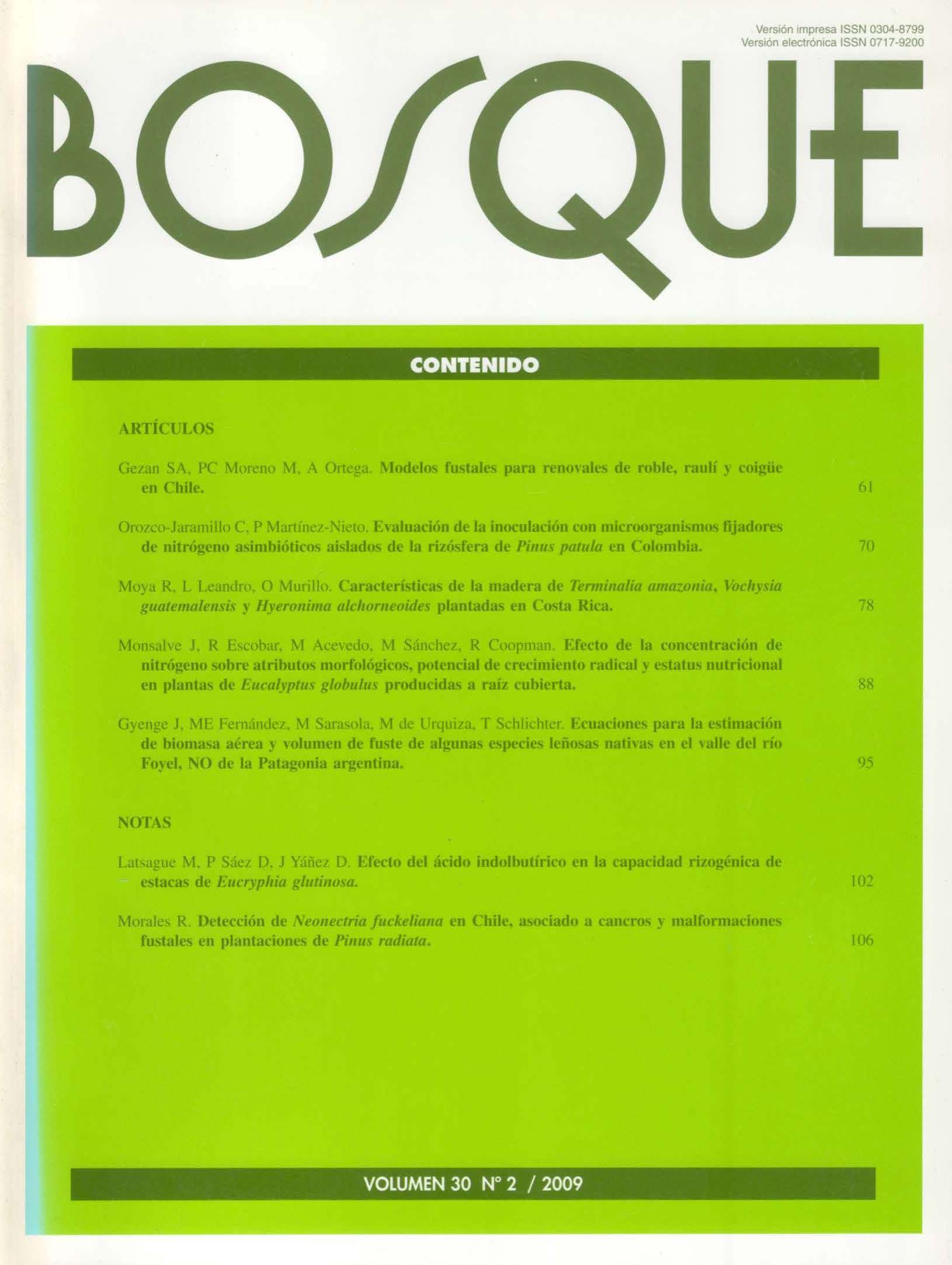Main Article Content
Aug 31, 2009
Abstract
The aim of the present study was to evaluate the esthetic and structural characteristics, as well as the wood decay resistance of Terminalia amazonia, Vochysia guatemalensis, and Hyeronima alchorneoides trees from fast-growth condition in a tropical humid region of Costa Rica. A total of 10 trees of T. amazonia, V. guatemalensis and H. alchorneoides each, were randomly selected for harvesting from forest plantations. Young trees of all three species showed very poor esthetic characteristics in comparison to market expectations, particularly due to their reduced heartwood content and their light dark color. Wood from plantation forest trees of V. guatemalensis, T. amazonia, and H. alchorneoides in Costa Rica showed inferior wood properties than wood from natural forests. However, age differences of trees between both provenances limit the validity of present results. Terminalia amazonia from forest plantations show very promising characteristics for industry processes due to its ease of drying, manipulation, and mechanical properties. The natural durability of species (young or mature) from humid regions of Costa Rica can be increased by means of preservation techniques such as the vacuum-pressing method, which are very convenient particularly in young trees with high content of sapwood.


